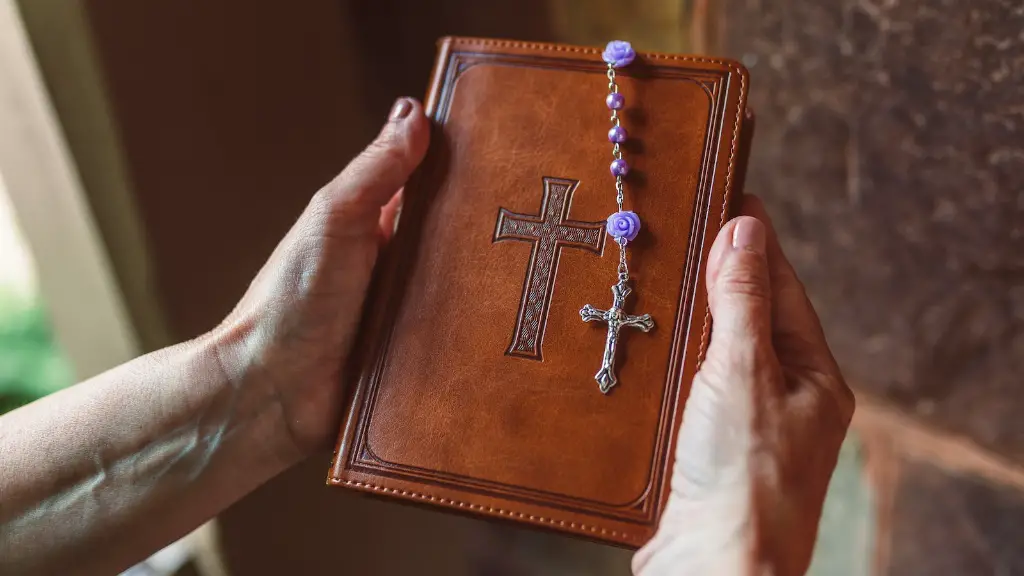The Queen of Sheba is one of the most talked-about and enigmatic figures from the Bible. She is viewed as a symbol of opulence, power, and mystery. She is believed to have been a royal in the ancient kingdom of Ethiopia, and is referenced in both the Torah and the Quran. Her visit to Israel is described in 1 Kings 10, and it is said that she came to test the wisdom of the great King Solomon.
It is not known exactly when the Queen of Sheba is thought to have lived or what her real name may have been. Many believe that she was a queen or ruler from the region of Sudan, Kismaayo, Yemen, Ethiopia, or Eritrea. She is believed to have lived sometime between 1000 and 950 BC. This is the time period of the reign of King Solomon, the successor of King David.
Biblical conspiracy theorists speculate on whether the Queen of Sheba was a real person or an allegorical figure. Some argue that the Bible is a blend of multiple legends and folklore, so it is difficult to determine which parts may or may not be factual. Those who do believe in her existence cite several pieces of circumstantial evidence that may hint at her veracity. For example, several stories in both the Old and New Testament reference her visit to Israel.
The Queen of Sheba has become a symbol of luxury, power, and stature in many cultures. Talmudic literature contains many references to her opulent lifestyle. The Jewish sages depicted her as a beautiful princess who must have had access to immense wealth and resources based on her journey to Israel. Other cultures have also depicted her as a powerful ruler, drawing numerous analogies to ancient African queens.
Today, the Queen of Sheba is often associated with faith, belief, and humility. Her visit to King Solomon is typically viewed as a journey of faith, as it is said that she was once a heathen but converted to monotheism after seeing Solomon’s wisdom. Her story is still used today as an example of how faith can conquer all odds in times of difficulty.
Deeply embedded in culture, the Queen of Sheba has been the subject of numerous works of art and literature. From plays to paintings, she has become a figure of fascination and mystery, drawing people in with her opulent and alluring story. Her story is even explored in modern films and television shows, further cementing her mythical status.
The Queen of Sheba stands as a testament to faith and power in the face of adversity. Although much of her story remains shrouded in mystery and ambiguity, her presence continues to be felt in modern culture and the minds of believers across the world.
Her Visit to Israel
The Queen of Sheba’s visit to Israel is one of the most iconic moments in the Bible. The story is told in 1 Kings 10, and depicts her journey to Jerusalem to witness the wisdom of King Solomon. It is said that she brought with her presents, including gold and precious stones, as a sign of her respect. She also brought him questions, testing out his knowledge.
The visit is often seen as significant for several reasons. Firstly, it is said to be the first recorded diplomatic mission in human history. The Queen of Sheba is recorded as having come in peace and with the intention of establishing a long-term relationship. This visit is also believed to mark the beginning of an era of exchange between Ethiopia and Israel.
The Queen of Sheba’s visit is also symbolic of the international power that King Solomon had attained and how wisdom is reliable in resolving complicated issues. The Bible states that she was so in awe of the King that she bowed down in reverence, a sign of the respect that she had for the great King.
Secondly, the visit is also seen as a lesson in faith and humility. Through faith and strength, the Queen of Sheba arrived at the gates of Jerusalem and encountered the difficult questions of King Solomon. Despite the language barrier and technical inconsistencies, her faith and strength allowed her to survive the journey and find her true purpose in life.
Finally, it is believed that the Queen of Sheba’s visit is the actual launching point for trade between the two sides. As seen in the Bible, the table was full of products from Israel and Ethiopia, showing that trade and diplomacy could indeed be conducted.
Her Status in Jewish Texts
The Queen of Sheba is encountered in many texts throughout the Jewish holy books, both in the Torah and Talmud. She is seen as a symbol of opulence, power, and mystery. In the Talmud, she is seen as a powerful ruler with immense beauty and wealth. Her story has been a source of fascination in Jewish culture since ancient times.
In Jewish legend, the Queen of Sheba is said to have converted to Judaism after being so impressed with King Solomon’s wisdom. This act is seen as an act of faith and courage, and her story is used by Jewish sages as an example of what can happen when one sets out on a journey of faith. This is why she is so revered in Jewish culture.
Her story also serves as a lesson in humility, illustrating how one can come from adversity and yet still strive to do great things. She is often used as an example of how dreams can come true if one puts their heart and mind into something.
The Queen of Sheba is also seen as a figure of prophecy, whose visits to King Solomon can be seen as the beginning of a new era of peace and understanding between Israel and other countries. This symbol of understanding has been cited as an example of what can be accomplished when different cultures come together in peace and understanding.
The legend of the Queen of Sheba stands as a testimony to the power of faith and courage. Her mystical story serves as a source of fascination for Jews and non-Jews alike.
Her Impact on Modern Culture
The Queen of Sheba has captivated the imagination of people throughout the centuries. From the Bible to modern art, the Queen’s story has been a source of inspiration and fascination. She is seen as a figure of opulence, power, and mystery, embodying the idea that true strength and courage come from within.
Today, the Queen of Sheba is often referenced in modern culture and in works of art. She has been depicted in numerous plays, movies, and television shows. Her story is used as an example of faith, courage, and perseverance, and her visits to Jerusalem are seen as the beginning of a new era of understanding between Israel and other countries.
The Queen of Sheba’s story has also been used in many fashion campaigns and media campaigns, bringing her story and her wisdom to the modern world. Her image is used as a symbol of strength, beauty, and empowerment, inspiring many to follow in her footsteps.
The Queen of Sheba’s legacy is still felt today, and her story continues to captivate audiences from all over the world. She stands as a symbol of faith, courage, and strength, and is an example of what can be accomplished with courage and perseverance.
Her Image in Art
The Queen of Sheba has long been seen as a figure of beauty, opulence, and mystery. She is often the subject of many works of art, ranging from paintings to sculptures. Artists, writers, and composers have covered her story throughout the ages, from the Middle Ages to the modern era.
Her image can be found in churches, synagogues, and mosques throughout the world. Paintings depicting her beauty and wealth can be found in museums in cities around the world. Her image is even featured in modern cinema, representing her impact on human history.
The Queen of Sheba’s story has also been used as inspiration in many fashion campaigns, showcasing her beauty and power. Her image has been used to represent luxury and wealth in some of the biggest fashion houses in the world.
Her image is also used to promote strength, empowerment, and understanding in many media campaigns. Her story is used as a symbol of faith, courage, and determination, and her image is used to inspire people from all walks of life.
The Queen of Sheba is a woman whose story still captivates people from across the globe. The depiction of her in various forms of art shows how her legacy has been preserved throughout the centuries.
Conclusion
The Queen of Sheba stands as a timeless symbol of faith, courage, and strength in the face of adversity. Her story has been recounted throughout the ages, and her legacy still serves as an example of what can be accomplished with strength and determination. Her visits to Jerusalem are seen as the beginning of a new era of understanding, and her story continues to captivate audiences in the modern era.
Throughout history, the Queen of Sheba has been the subject of numerous works of art, cementing her image as a figure of power and mystery. Her image is used to promote strength, power, and understanding, and her story is an example of the power of faith and courage.
Although much of her life is shrouded in mystery, the Queen of Sheba stands as a symbol of faith and courage. Her story is a testament to the power of belief, and her story continues to provide inspiration and understanding to believers from across the globe.





